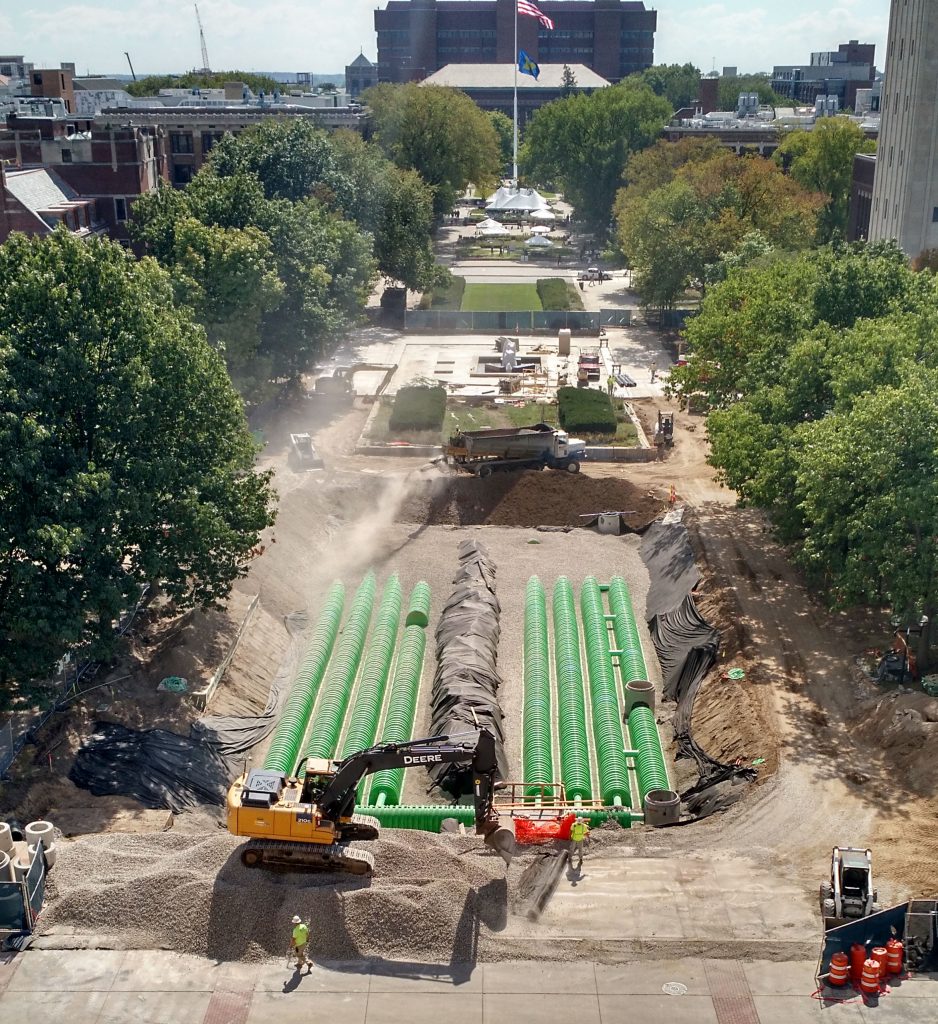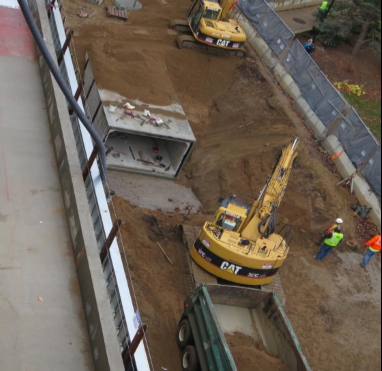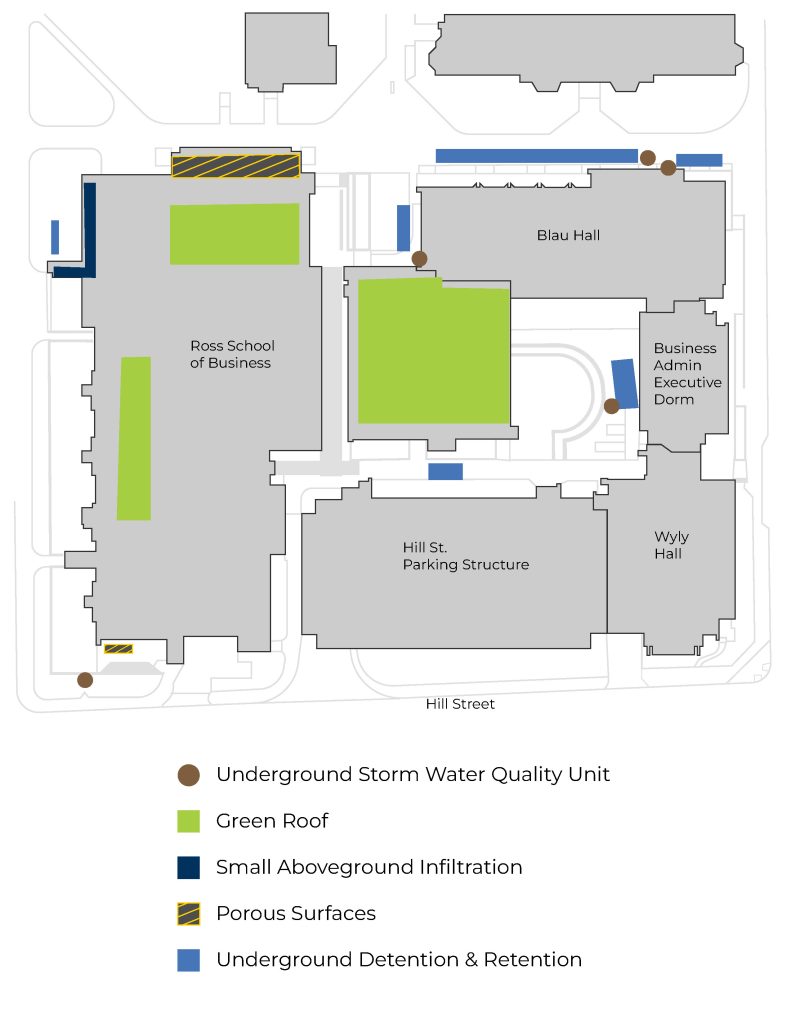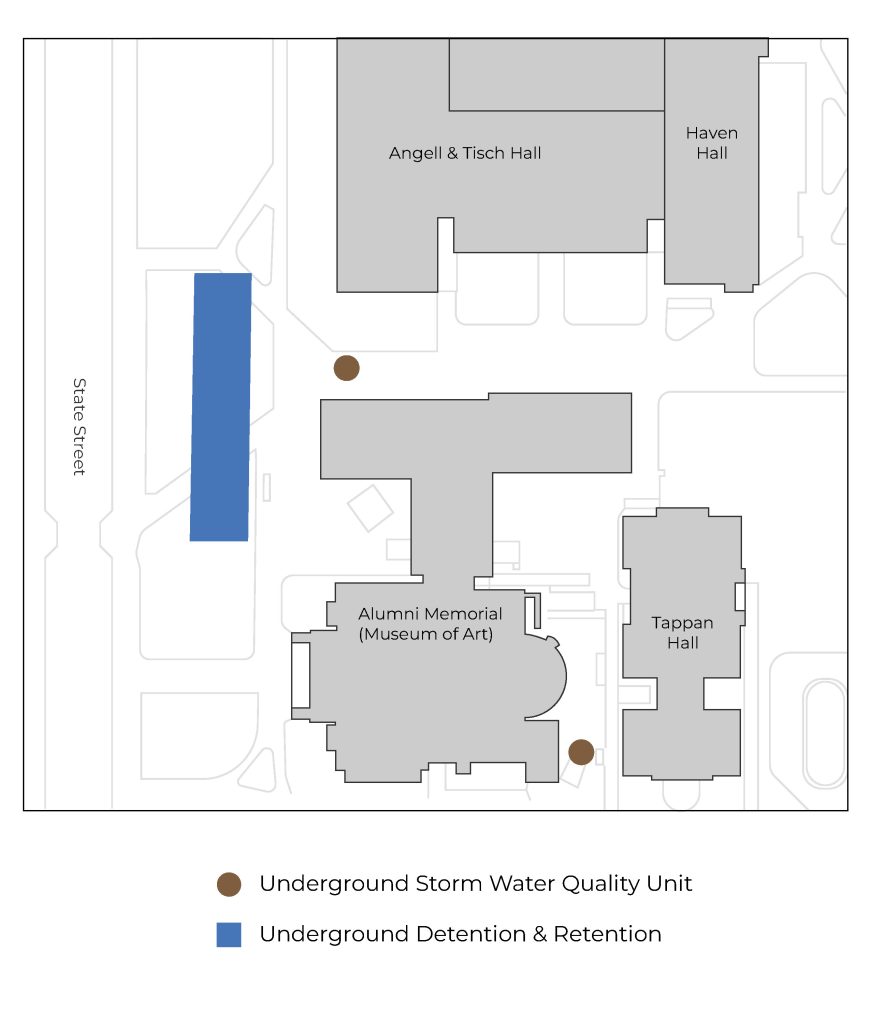University of Michigan Storm Water Management Highlights
U-M strives to protect water quality of the Huron River—an important drinking water and recreational resource—by reducing the volume, rate, and pollutant load of runoff. Storm water management also controls flooding, protects university and community infrastructure, and helps reduce demand on the City of Ann Arbor and Washtenaw County storm water systems.
Some storm water control measures are highly visible, like rain gardens and retention ponds. But you might walk over or past others without knowing they exist!
Scroll to learn about a few of U-M’s major storm water management projects.
What's below your feet when you walk through Ingalls Mall?
Not what you pictured?
This sophisticated underground storm water infiltration basin collects and treats water from 3 acres, allowing it to soak into the ground gradually. U-M installed this system electively (not as part of U-M’s Michigan Department of Environment, Great Lakes, and Energy-issued storm water permit) in 2016.

Benefits:
- Improves water quality by removing pollutants
- Frees up capacity in the City of Ann Arbor’s storm water system
- Reduces flooding risk
- Replenishes groundwater
Similarly, under Monroe Mall…

U-M installed an infiltration basin under Monroe Mall during the construction of the Ross School of Business Jeff T. Blau Hall to help alleviate flooding on E University Ave. The basin collects and treats water from about 37 acres (21 U-M acres), allowing it to soak into the ground gradually. As with the Ingalls Mall project, U-M elected to install this infiltration system to meet storm water management needs, not as a permit requirement.
As shown in the right map, the Ross School of Business Complex also features:

An underground infiltration system to reduce runoff and improve water quality
Another infiltration system under this interior courtyard
And porous concrete under the bike racks to reduce runoff.

Porous concrete
Or this rain garden that captures water to reduce runoff.
Other storm water control measures at Munger are not visible to passersby.
What lies beneath the surface of this rain garden?
An infiltration system that:
- Improves water quality by removing pollutants
- Frees up capacity in the City of Ann Arbor’s storm water system
- Reduces flooding
- Replenishes groundwater
In 2018, U-M elected to install two more major underground storm water infiltration systems.
Benefits:
- Reduces the likelihood of flooding
- Frees up capacity in the university’s and City of Ann Arbor’s storm water systems
- Reduces flows to Allen Creek and then to the Huron River
- Improves water quality by removing pollutants
- Replenishes groundwater

Trotter Multicultural Center
This system is designed to allow rain through a 100-year storm event to gradually soak into the ground.
Central Campus underground infiltration system

During a 100-year storm event, the system removes 84% of storm water runoff from a 9-acre drainage area within the Allen Creek watershed. The system infiltrates 635,000 gallons of water at a time, which equates to 1.5 feet of water covering a football field!
Learn more
Interested in the technical details? Environment, Health & Safety has you covered.
Prepared by Facilities & Operations departments The Office of Campus Sustainability; Environment, Health & Safety; and Architecture, Engineering and Construction.
Questions or comments? Contact The Office of Campus Sustainability at [email protected].


